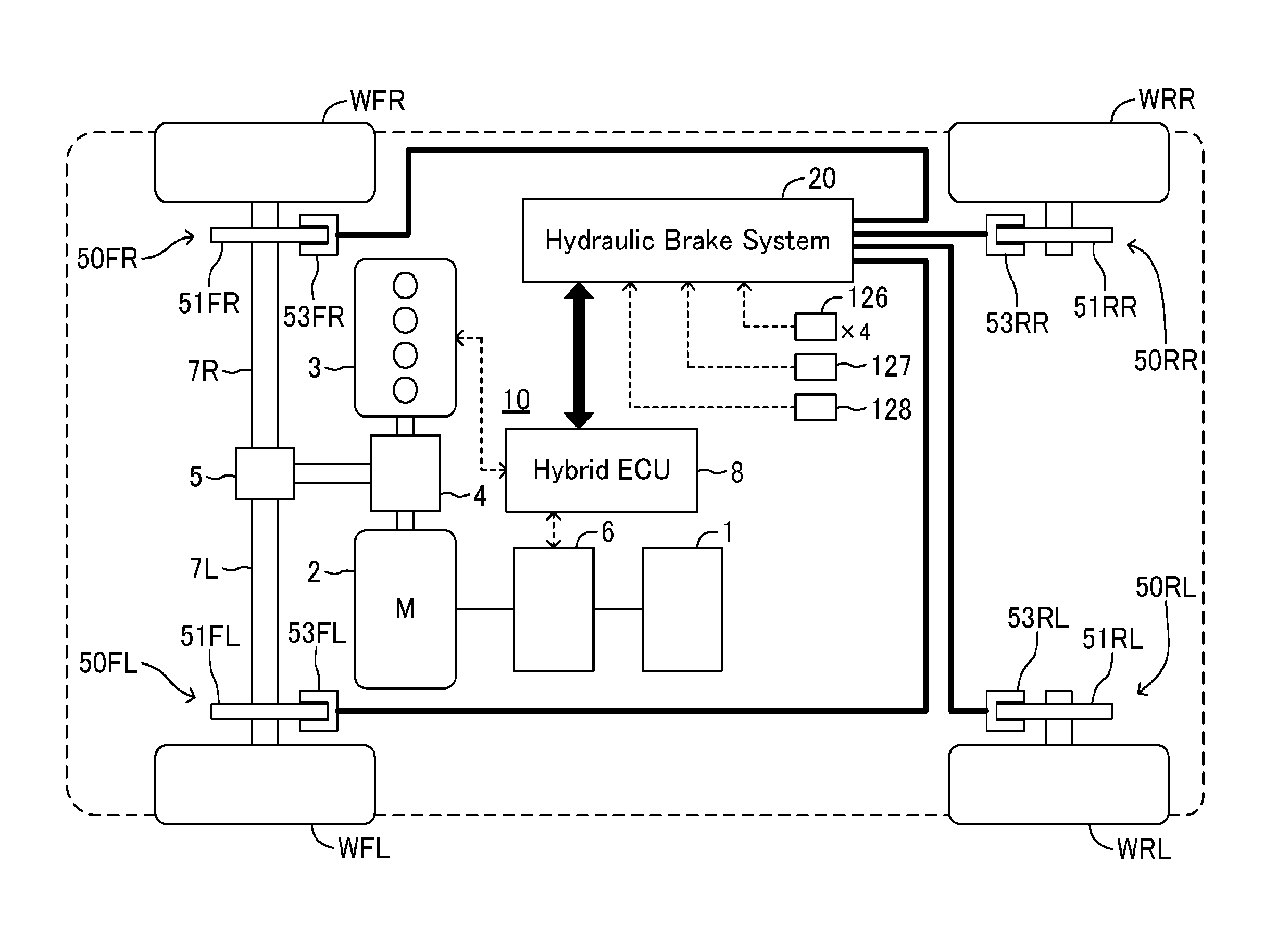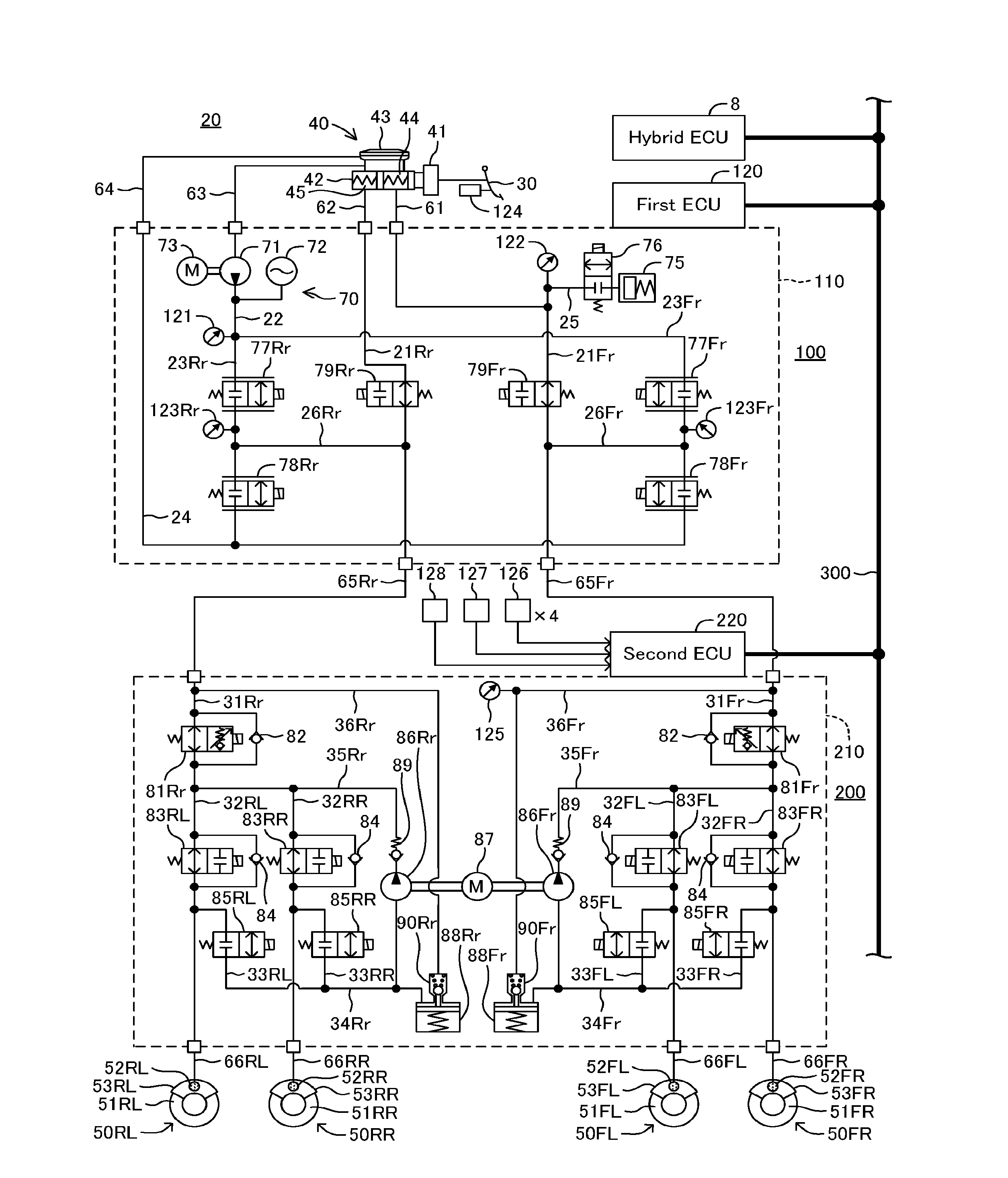Brake apparatus
a technology of brake apparatus and cylinder, which is applied in the direction of brake systems, instruments, electric devices, etc., can solve the problems of large time delay, change in hydraulic pressure rigidity in the passage, and delay in the treatment of stopping regenerative braking to shift to a brake control only by friction braking, etc., to improve the durability reduce the operating noise of the linear control valve, and stable hydraulic pressure
- Summary
- Abstract
- Description
- Claims
- Application Information
AI Technical Summary
Benefits of technology
Problems solved by technology
Method used
Image
Examples
Embodiment Construction
[0050]Hereafter, a brake apparatus for a vehicle according to one embodiment of the present invention will be explained using drawings. FIG. 1 is a schematic structure of a regeneration coordination brake apparatus comprising a brake apparatus according to the present embodiment.
[0051]The brake apparatus according to the present embodiment is applied to a front-wheel-drive-type hybrid vehicle comprising a hybrid system 10 which controls two kinds of power sources, i.e., a motor 2 to which an electric power is supplied from a battery 1 and a gasoline engine 3. In the hybrid system 10, the motor 2 can be used not only as a driving power source, but regenerative braking force can be generated on front, left and right wheels WFL and WFR by using a kinetic energy of a wheel to rotate the motor 2 to generate electricity and collecting the generated electric power in the battery 1. The hybrid vehicle comprises a hydraulic brake system 20 which generates friction braking force on the front,...
PUM
 Login to View More
Login to View More Abstract
Description
Claims
Application Information
 Login to View More
Login to View More - R&D
- Intellectual Property
- Life Sciences
- Materials
- Tech Scout
- Unparalleled Data Quality
- Higher Quality Content
- 60% Fewer Hallucinations
Browse by: Latest US Patents, China's latest patents, Technical Efficacy Thesaurus, Application Domain, Technology Topic, Popular Technical Reports.
© 2025 PatSnap. All rights reserved.Legal|Privacy policy|Modern Slavery Act Transparency Statement|Sitemap|About US| Contact US: help@patsnap.com



